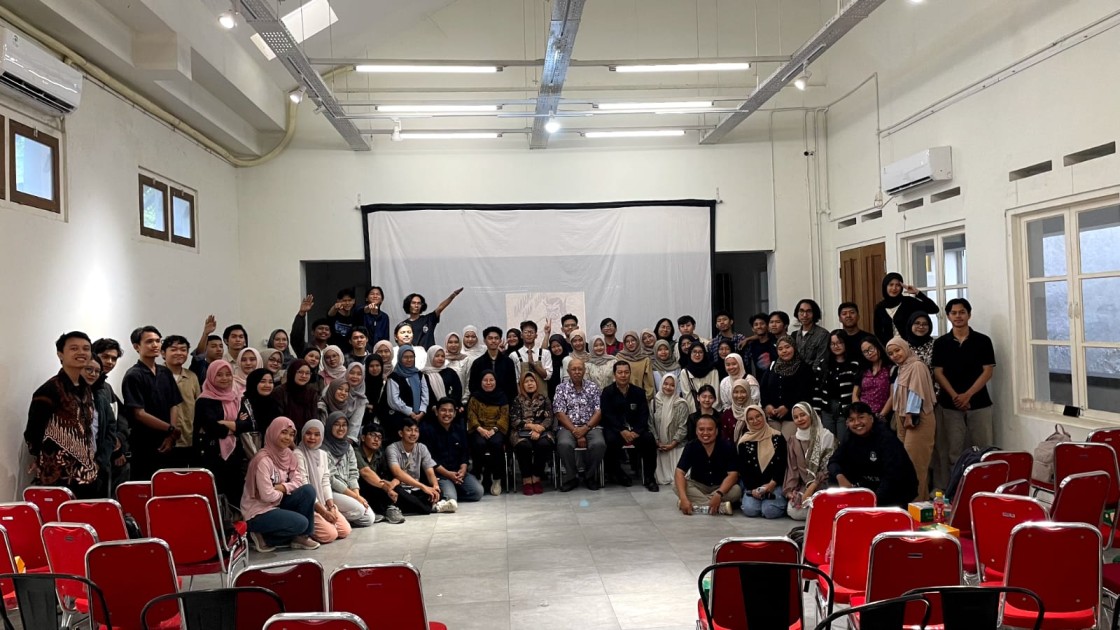Lawang Sewu Review is one of the most famous historical buildings in Indonesia. This building is an old one that has art deco architecture. This building was once used as the Head Office of the Railway (Tram) or Nederlandsch Indische Spoorweg Maatschappij (NIS) (jatengprov, n.d.). This iconic building is located in the Tugu Muda Complex area of Semarang. The building by Dutch architects Prof. Jacob F. Klinkhamer and B.J. Queendag was historically built in 1903 and inaugurated on July 1, 1907. Semarang people are more familiar with this building as the Lawang Sewu Building. This is because this building has a large number of doors, which in Javanese, Lawang Sewu, means door and Sewu, which means thousand.
The popularity of Lawang Sewu as a building that is considered haunted invites many people to come visit. The Lawang Sewu building is used as a tourist attraction in the form of historical relics of ancient and antique building architects, basements, and information towers. It is often also used as an exhibition venue for certain events. From this building, it can be observed that there are social and cultural values. Lawang Sewu was first built in the 1900s as the office of Indische Spoorweg Maatschappij (NISM), a private railroad company from the Netherlands.

When we visited Lawang Sewu, we saw that the building is still in a fairly well-maintained condition, although it may not look entirely good considering that this is a historical building that is more than 100 years old. The building is still very sturdy. The damage we saw was some windows with broken glass and no glass; besides that, during the visit, we saw on several sides that there were floors with broken tiles, and some left only the cast part, especially in the stairs. The shape of the stairs in the building has a circular shape with a steep slope, and the condition of the broken ceramic floor will certainly endanger visitors, so visitors are advised to be careful.
At the time of the visit, renovations were being carried out on several sides of the building, possibly to build some new buildings or repair damage inside the building. Inside the building, there are various kinds of collection items related to Indonesian railways, ranging from miniature trains to photographs and infographics about the history of Indonesian railways, including not only railroad collection items but also historical items such as telephones, typewriters, and others. The condition of the items is still very good and well preserved; the items are sealed in glass containers with a warning not to touch.
Lawang Sewu was built by the Dutch on February 27, 1904, and completed in 1907. Initially, this building functioned as the headquarters of a private railroad company owned by the Netherlands under the name Nederlands Indische Spoorweg Maatschappij, abbreviated as NIS. This company was the first to build railroad lines in Indonesia, connecting Semarang, Surakarta, and Yogyakarta. The first line built was at Semarang Temanggung in 1867.
Construction of Lawang Sewu began in 1904 with the erection of buildings D (guard house) and C (printing press), which were used as the directors’ buildings. The construction of building A had to wait for soil improvement before replacing it with a layer of volcanic sand. On July 1, 1907, buildings A (the main NIS office building), C, D, and E were completed. Building B, which was an extension of Building A, began construction in 1916 using reinforced concrete construction and was completed in 1918.
The building was designed by Prof. Jakob F. Klinkhamer and B.J. Ouendag, architects from Amsterdam, with dominant characteristics in the form of curved and simple elements. The building is designed to resemble the letter L and has a large number of windows and doors as an air circulation system. Because of the large number of doors, people named it Lawang Sewu, which means a thousand doors. In addition to its unique building design, Lawang Sewu has stained glass ornaments made by Johannes Lourens Schouten. The stained glass tells the story of the prosperity and beauty of Java, Dutch rule over Semarang and Batavia, maritime cities, and the glory of the railroad. Other decorations at Lawang Sewu include pottery ornaments on the curved plane above the balcony, a small dome at the top of the water tower covered in copper, and a spire with bronze decorations.
In the history of Lawang Sewu, there are several important values contained, among others:
- Colonial Historical Value: Lawang Sewu was built by the Dutch as the headquarters of a Dutch-owned private railroad company. As a historical building from the colonial period, Lawang Sewu reflects the Dutch presence and influence on infrastructure development in Indonesia at the time.
- Architectural and Design Value: Lawang Sewu’s unique design, characterized by its dominant curved and simple elements, reflects the Dutch architectural style of the early 20th century. The building also has distinctive ornaments such as stained glass, pottery ornaments, a small dome at the top of the water tower, and a spire with bronze decoration. These values reflect the architectural craftsmanship and fine arts of their time.
- The Value of the Independence Struggle: Lawang Sewu is a silent witness to the struggle for independence of the Republic of Indonesia. During the War of Independence, Lawang Sewu was the center of a battle between Japanese soldiers and Indonesian freedom fighters in the 5-Day Battle of Semarang. The building was also the site of torture and executions of prisoners by Japanese soldiers. As a symbol of struggle and sacrifice in achieving independence, Lawang Sewu has heroic values that are respected.
- Cultural Heritage Value: Lawang Sewu is one of Indonesia’s cultural heritages that has an important value in enriching the nation’s cultural diversity and history. This building is one of the historical tourist destinations that introduces visitors to the colonial period and the struggle for Indonesian independence.
- Educational and Research Value: Lawang Sewu is an object of study and research in architecture, history, and culture. Through in-depth research and understanding of Lawang Sewu, we can learn more about the development of colonial architecture, the struggle for independence, and Indonesia’s history and cultural heritage.
The existence of the Lawang Sewu Building is a very important historical heritage to explore and know the history and culture of Semarang city in the past. In connection with preservation efforts, the government, through the Semarang City Provincial Office, has made efforts to preserve historical and cultural heritage in the city of Semarang, especially the Lawang Sewu Building, by means of restoration and maintenance. The restoration and maintenance of the Lawang Sewu Building were carried out by PT KAI Semarang City in collaboration with the Semarang City Tourism Office and the Central Java Provincial Tourism Office. The restoration is carried out in two stages: the first is the building, and the second is the environment. The restoration was carried out by repainting worn-out walls and replacing glass and door leaves in the building’s office space. When we visited the location, at some points renovations were being carried out, proving that the government and agencies such as PT KAI are very concerned and take care of the condition of this historic place.
From these explanations, several things can be explained about Lawang Sewu as the object of observation in this social conservation observation activity. By conducting social conservation observation in Lawang Sewu, it is possible to learn and understand matters related to what social practices and actions have been and should be carried out in Lawang Sewu with the aim of preserving culture, history, and other social conservation values that are implied or expressed in Lawang Sewu itself.
These things can be known from the characteristics of the infrastructure and history of Lawang Sewu itself. The architecture of Lawang Sewu has Dutch characteristics because Lawang Sewu was used as a railroad office owned by the Dutch East Indies. In addition, Lawang Sewu itself has many historical values. The history of Lawang Sewu itself has had a great influence on the progress of the railroad sector, the progress of Indonesia, and the progress of the city of Semarang itself. However, as Indonesians, we must not forget the dark history that exists and is left behind in Lawang Sewu. Lawang Sewu itself is a place that became a prison for the natives during Dutch colonization and a silent witness to the efforts to win Indonesian independence. Therefore, Lawang Sewu has historical value and, at the same time, the value of love for the country.
As one of the tourist attractions and museums in the city of Semarang, Lawang Sewu itself has its own uniqueness for both domestic and foreign tourists. The uniqueness of Lawang Sewu is because of Lawang Sewu itself, which means a thousand doors. But actually, there are only 928 doors, which is still a large number of doors. Besides that, Lawang Sewu was constructed by the Dutch colonialists, which means it has an architecture like buildings in Europe. Those two are the main selling points of Lawang Sewu that make people go there.
As a cultural heritage site, Lawang Sewu is managed by the Semarang City government. The government is responsible for the revitalization of Lawang Sewu. They are the ones that manage it, too. The reason for that is because Lawang Sewu is a historical building that is directly connected with the Semarang City government. That is because Lawang Sewu shows the history of Semarang City and how the Semarang City government improves itself with each generation.
The cultural values in Lawang Sewu are the architecture and the infrastructure. That is because Lawang Sewu is a building that was built by the Dutch colonialists back then. Therefore, Lawang Sewu has a European-style building. Besides that, Lawang Sewu means a thousand doors,” but it is actually just 928. Those two are the most important selling points of the Lawang Sewu. Also, those two points should be preserved and managed by all people, especially the Semarang City government as the Lawang Sewu manager.
The character values in Lawang Sewu are curiosity, national spirit, and love for the motherland. The curiosity value is because Lawang Sewu is actually a museum that shows the history and other valuable information that fosters curiosity about the history of Indonesian independence, Semarang City, and Indonesia’s railway. The national spirit value is because the Lawang Sewu itself is a silent witness of how Indonesia got its own independence after being colonized for a really long time, especially by Dutch colonists. The love for the motherland value is because the information that is served in Lawang Sewu can make the visitors grow their love for the motherland, Indonesia, for the struggles that have been carried out in the past while being colonized and also for maintaining the spirit of Indonesia’s independence as an independent country.
Written by: Dinda, Radite, Adil, Hanik, Levin, Alief



